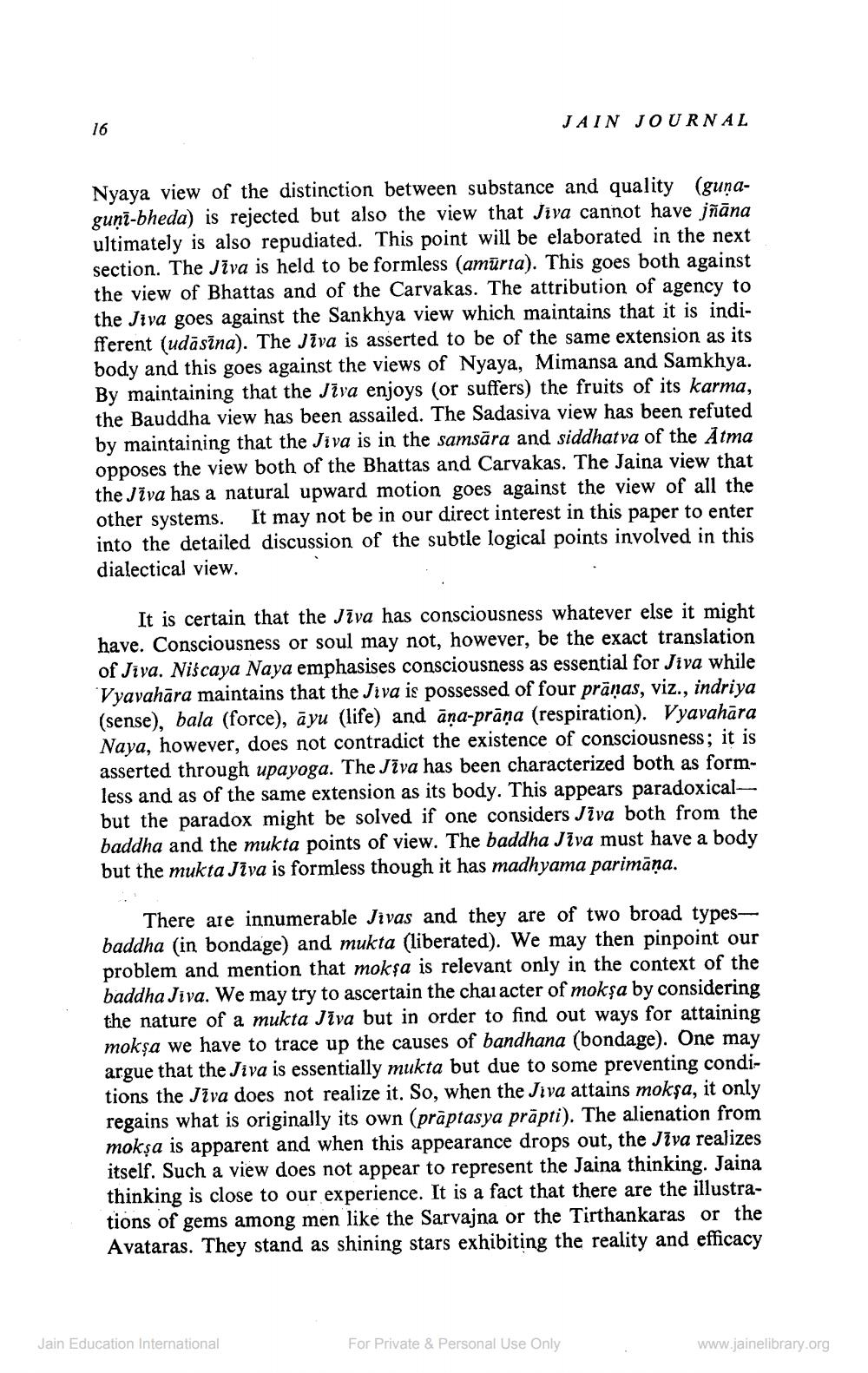________________
16
JAIN JOURNAL
Nyaya view of the distinction between substance and quality (gunaguni-bheda) is rejected but also the view that Jiva cannot have jñāna ultimately is also repudiated. This point will be elaborated in the next section. The Jiva is held to be formless (amurta). This goes both against the view of Bhattas and of the Carvakas. The attribution of agency to the Jiva goes against the Sankhya view which maintains that it is indifferent (udāsīna). The Jiva is asserted to be of the same extension as its body and this goes against the views of Nyaya, Mimansa and Samkhya. By maintaining that the Jiva enjoys (or suffers) the fruits of its karma, the Bauddha view has been assailed. The Sadasiva view has been refuted by maintaining that the Jiva is in the samsara and siddhatva of the Atma opposes the view both of the Bhattas and Carvakas. The Jaina view that the Jiva has a natural upward motion goes against the view of all the other systems. It may not be in our direct interest in this paper to enter into the detailed discussion of the subtle logical points involved in this dialectical view.
It is certain that the Jiva has consciousness whatever else it might have. Consciousness or soul may not, however, be the exact translation of Jiva. Niscaya Naya emphasises consciousness as essential for Jiva while Vyavahāra maintains that the Jiva is possessed of four praṇas, viz., indriya (sense), bala (force), ayu (life) and aṇa-prāṇa (respiration). Vyavahara Naya, however, does not contradict the existence of consciousness; it is asserted through upayoga. The Jiva has been characterized both as formless and as of the same extension as its body. This appears paradoxicalbut the paradox might be solved if one considers Jiva both from the baddha and the mukta points of view. The baddha Jiva must have a body but the mukta Jiva is formless though it has madhyama parimāṇa.
There are innumerable Jivas and they are of two broad typesbaddha (in bondage) and mukta (liberated). We may then pinpoint our problem and mention that mokşa is relevant only in the context of the baddha Jiva. We may try to ascertain the chai acter of moksa by considering the nature of a mukta Jiva but in order to find out ways for attaining mokşa we have to trace up the causes of bandhana (bondage). One may argue that the Jiva is essentially mukta but due to some preventing conditions the Jiva does not realize it. So, when the Jiva attains mokşa, it only regains what is originally its own (prāptasya präpti). The alienation from mokṣa is apparent and when this appearance drops out, the Jiva realizes itself. Such a view does not appear to represent the Jaina thinking. Jaina thinking is close to our experience. It is a fact that there are the illustrations of gems among men like the Sarvajna or the Tirthankaras or the Avataras. They stand as shining stars exhibiting the reality and efficacy
Jain Education International
For Private & Personal Use Only
www.jainelibrary.org




